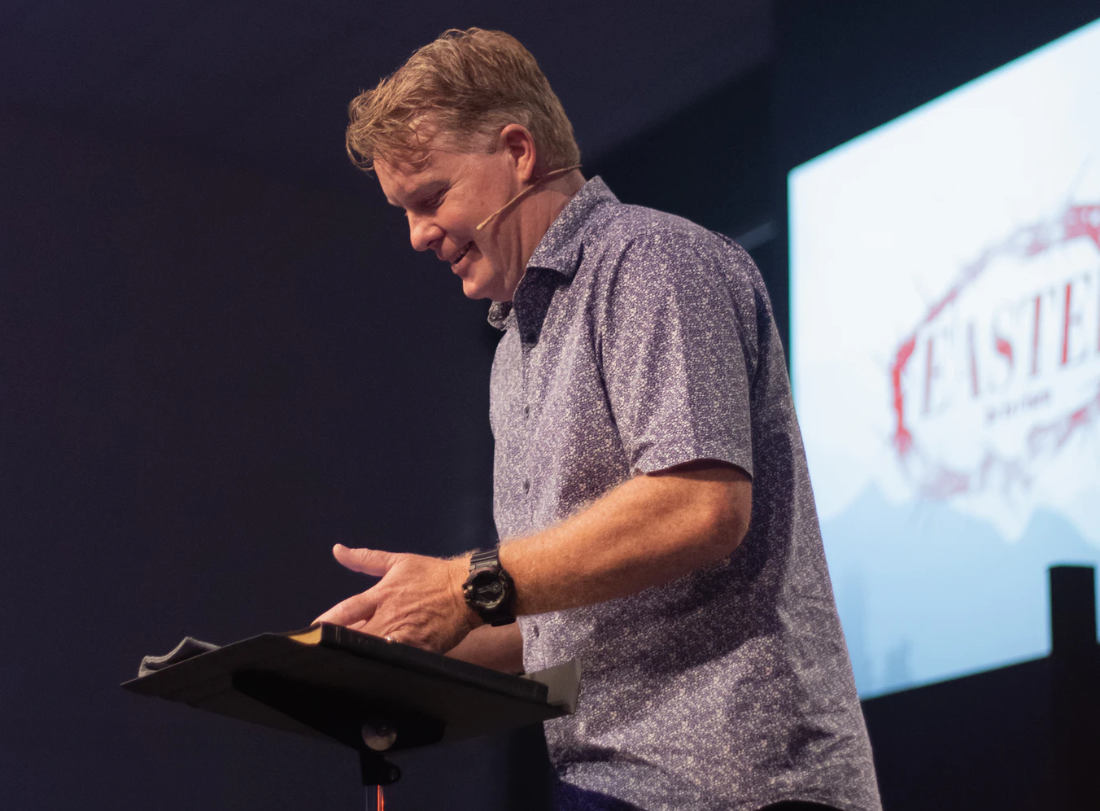I spent nearly seven of my early career years working at a seminary, watching class after class of students get spiritually torn down and rebuilt, with my role being to help educate them in the ways of technology. In that time, I developed several bits of curricula to help tech teams communicate with pastors and to help pastors communicate with tech teams.
The first questions pastors must ask (and determine answers to): How does your denomination define worship? What does technology mean for you, your team, and most importantly, your congregants? What would it mean to keep tradition but augment it with technology?
Tradition and technology are not mutually exclusive ideas. I’ve been part of beautiful worship accompanied by zero technology and I’ve been part of beautiful worship completely shrouded in tech. We can use technology to not only allow our worship to become accessible on many planes, but to also create dimensional liturgical experiences. Don’t let change stop you from bringing the Word to those who need it most.
Understanding The Role
Public address (PA) systems exist so that a single person or small group of people can easily be heard by a great number of people without the need of fantastic architectural designs. In their simplest form, PA systems are made up of microphones, amplifiers, and loudspeakers, and these components allow us to create and share an egalitarian experience for everyone – which I feel confident saying is what Jesus would want.
We can use this technology to provide intelligibility, accessibility, and even create emotion and beauty. It’s actually pretty wild when you think about it. We have to reframe how we think about audio and technology if we are to understand it, and thus utilize it to our best ability for our people – the congregants.
If technology can supply all of this, then it would seem fit that we have informed and trained people running it. The best and worst part about technology in this context is that it is constantly changing. It’s why training ends up paying our services back tenfold.
This is where tech teams come in. They need functioning tools, sure, but knowledge is power. Pastors don’t need to understand the differences between various microphones (or any other components for that matter), but they must surround and support the worship experience with people who do. And they must be able to communicate with those people effectively – not at a technical level, but with an understanding that what they do takes hard work, practice, training, and skill, and it also often requires sacrifice.
A Team By Any Other Name…
The folks who handle technology at a church can be called Tech Ministry, Tech Arts, Production Team – there are so many options, and they’re all fine. What’s important is that they be given a name to help garner a “team” feeling and as a way to reference all the volunteers or staff people associated with the production of worship. By the way, “production” isn’t a dirty word – it’s just a term that means the action of making or being manufactured. We’re in the work of making or facilitating spiritual moments, no?
Most production teams are then broken down into individual parts or sections (or sub teams), usually with a group to handle audio, another for graphics/video, and yet another for lighting. Some of these “mush” together, with individuals playing a role with two (or more) groups, while others split down even further into specific specialties.
Let’s break down the key members of an average-sized/staffed audio team. At smaller churches, this may be an individual who runs whatever sound equipment might be on hand. (There could also be a back-up person to this individual, or two or more people who take turns from service to service and/or week to week.)
When things start to get to be too much for a single individual, duties are divided into what is commonly called, in audio world, the A1 (lead tech) and A2 (support tech). The A1 typically runs the sound reinforcement that’s happening to support worship services while the A2 often helps with things like changing batteries, interfacing with the pastors as well as other people speaking and musicians, helping to meet their specific needs and requests. The A1 may also help with those aspects, while the A2 may also handle a “secondary” sound aspect such as streaming. The team may even expand to include a broadcast mixer, who will mix (what else?) the broadcast stream!
Vocabulary Primer
While pastors don’t need to know all the wild verbiage that the production team uses, it is to their distinct advantage to be able to communicate efficiently and effectively with them. Here’s a light vocabulary list of key terms to know:
Volume: A generalized consumer word somewhat meaning “loudness.” It’s best to not use this term and instead use “loudness” or “level” when referring to the level of sound in your sanctuary.
Mic: Short for microphone. Less syllables = better.
PA: As noted earlier, public address, a.k.a., the main sound system serving the entire sanctuary.
Speaker: Short for loudspeaker, also sometimes called a “box.”
Broadcast: A generic term for an audio and video feed being sent out for live viewing on TV and/or the Internet.
A Note About Mics…
The primary audio touchpoint for pastors is the microphone, so it’s crucial to understand the very basics of proper mic technique, or to least to be aware of them.
For example, if a pastor prefers a lapel mic, once it’s attached, it should not be moved without consulting a sound tech. Even seemingly slight changes can compromise the mic’s ability to capture the human voice. The same goes with headset/earworn mics.
Continuing along these lines, if a pastor prefers to utilize a podium/lectern-mounted mic, it’s important to stay within the recommended distance of the mic, and also to not get too close. (The same goes for others talking during services, such as those doing readings.)
If the preference is a handheld mic, it’s vital to follow the guidelines of the sound team on its use. Keep it at the recommended distance as much as possible, don’t waive it about randomly, and don’t “cup” the mic head.
The bottom line is that all of these factors (and more) can compromise not just the performance of the mic, but the reinforcement of the “Word” through the sound system. So, if the pastor and the sound tech/team agree to do “X” in terms of mic usage, please do so because there are very good reasons for doing so. And if the pastor isn’t comfortable with something, by all means bring it up with the tech – ahead of time – and work out a solution prior to services.
For a wealth of additional information along these lines, be sure to check out the new Audio 101 For Pastors video course available at Church Sound University.




















